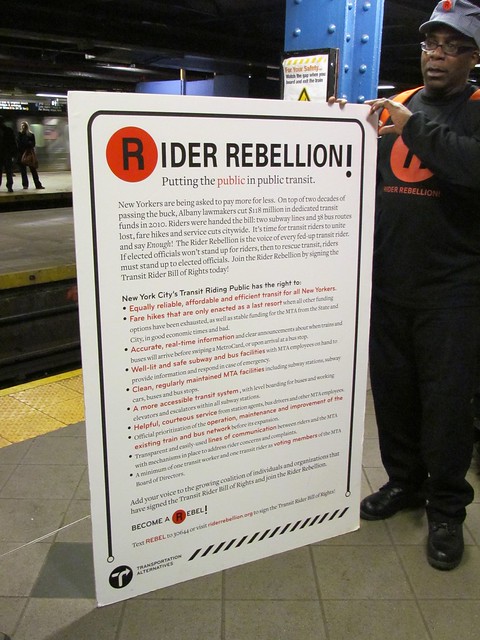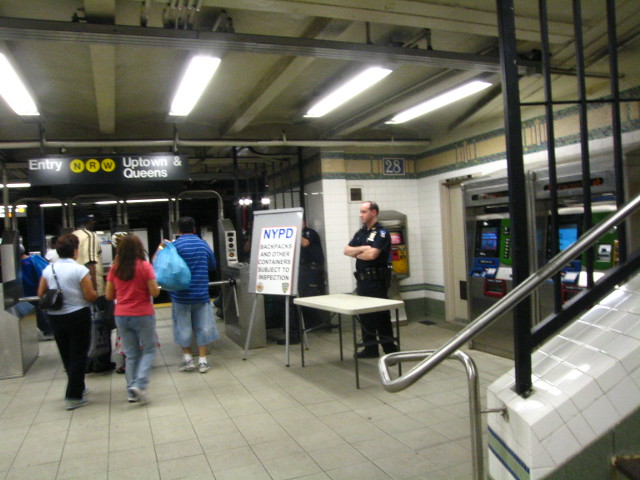
Brodie Enoch, the leader of Transportation Alternative's Rider Rebellion, urges the city's subway riders to stand up to Albany. (Photo by Benjamin Kabak)
Over the past few months, as subway fares have gone up and service down, Transportation Alternatives has tried to stir up a Rider Rebellion. They’ve garnered press attention and have a website devoted to the cause as they try to pressure Albany to fund transit in New York. Yesterday, they took to the tracks.
For the first time, TA’s rebellion headed underground as activists staged a flash rally. At 10:15 a.m., the group boarded an A train at Columbus Circle and rode to 125th St. Along the way, they asked riders to support the cause and explained how Albany’s actions in stealing $143 million from transit riders in 2009 led to 2010’s service cuts and fare hikes. With a trumpeter playing the famous “Take the A Train” in tow, TA’s operatives found an audience receptive to their message (and free water bottles).
I journeyed on that A train with the group yesterday and snapped some photos of the event. DNA Info’s Olivia Scheck produced a story and video on the rally as well. The organizers were thrilled with their first-time results, but they have a long way to go to convince New Yorkers that their elected officials must be held responsible for the MTA’s precarious financial state. It is a message that must be heard.

 Sometime in the eventual future, the MTA will do away with MetroCards and move toward a tap-and-go fare payment system. When the familiar pieces of plastic with their particularly sensitive magnetic stripes go the way of the dodo, the authority will have a chance to re-imagine how we pay for our subway rides. Do we need a pay-per-ride option? How should unlimited fare cards work in this brave new word of contactless payment?
Sometime in the eventual future, the MTA will do away with MetroCards and move toward a tap-and-go fare payment system. When the familiar pieces of plastic with their particularly sensitive magnetic stripes go the way of the dodo, the authority will have a chance to re-imagine how we pay for our subway rides. Do we need a pay-per-ride option? How should unlimited fare cards work in this brave new word of contactless payment? 
